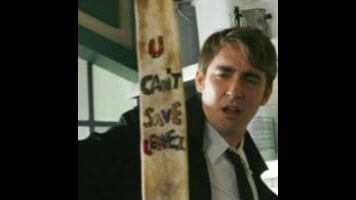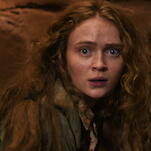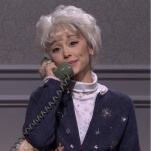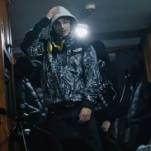Pushing Daisies: Pie-lette

(Premieres tonight on ABC at 8 p.m. ET)
The pilot for Pushing Daisies leaked to the web approximately 17 years ago, so anyone with an interest in the show and an Internet connection has probably already seen it, and likely told their friends about it. Those who haven't have probably at least been subjected to some of the mountains of hype surrounding the show (which I myself contributed to in our fall T.V. preview). Now, the lovechild of Barry Sonnenfeld and Bryan Fuller has finally sprung in all its Technicolor glory onto the airwaves, and it's official: this is a really good pilot.
Repeat: this is a really good pilot (no, I will not call it "Pie-Lette"—dammit!). Based on this one hour, it seems totally reasonable to say that Pushing Daisies is going to be a great, popular show—provided it maintains the quality and originality without drowning in its own whimsy. That could be a tall order, especially taking into account Fuller's last great failed projects Dead Like Me and Wonderfalls. (Though, to be fair, Dead Like Me's sharp decline followed Fuller's departure from the show). But it's too early to be casting doubt, especially after such a sweetly demented hour of television.
As someone who has tried to explain the premise of the show numerous times, I'm impressed with how much exposition the Pushing Daisies pilot is able to accomplish without losing momentum (at least some credit for that goes to Jim Dale, of the Harry Potter audiobooks, whose narration skills could make the phonebook riveting). The breezy-yet-morbid preface blazes through the convoluted situation of Ned (Lee Pace), who inexplicably has the ability to bring people back from the dead—but only for 60 seconds, or else someone dies in their place, and a second touch will instantly re-kill them. Following five minutes of Crayola-colored childhood trauma (two dead parents, lost puppy love, and an eyepatch-wearing Swoosie Kurtz), we're brought to the present day, where Ned is stoically making pies and refusing to touch his once-dead dog, lest he send him packing back to doggy heaven. Oh, and he's also helping private investigator Emerson Cod (Chi McBride) solve murders for the reward money, a task made significantly more straightforward thanks to Ned's special ability. That is, until he reanimates his long-lost childhood sweetheart, girl-next-door Chuck (Anna Friel). And now things get sticky. That's a lot of territory covered, and we're not even halfway in.
This show has been called a "forensic fairy tale," a tag that's as apt as it is nauseating. It seems at this point like the Chuck/Ned relationship and the mystery-solvin' are going to get equal weight, which is good, because the romantic storyline, while endearing right now, could become dangerously cute. Thankfully, Pace injects enough dryness into the proceedings to balance out the pixie antics of Friel, who's seemingly cast from the same mold as every big-eyed gal who's pranced across the screen since Natalie Portman name-dropped The Shins. While she's not cloying yet, she's one honey-hawking scheme away from quirk-overload. And yet, I admit to melting a bit at the look on Chuck's face when Ned "hugged" her via the visibly unimpressed Emerson—though even the gushy 13-year-old girl in me groaned at the sight of Ned and Chuck holding their own hands in lieu of the other's touch.
Something that bodes especially well for the show is the strong cache of supporting players. While Ned and Chuck are obviously going to drive this season, I'm already looking forward to the inevitable triangle between them and Kristin Chenoweth (a personal favorite), along with wacky adventures with Chuck's aunts (I'm keeping my fingers crossed for more monocular badassery from Swoosie Kurtz). And, should the musical episode that's rumored for this season actually take place, Chenoweth and Kurtz, along with stage veteran Pace, will hopefully elevate it beyond gimmickry. I'm still not sure about McBride, whose main function at this point seems to be as the eye-rolling, boy-you-so-crazy skeptic—though I suppose there does need to be one "normal" around.








































